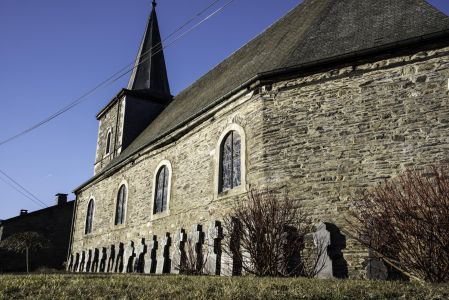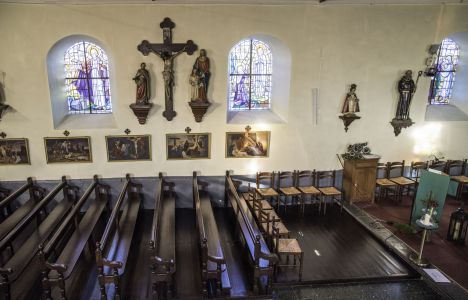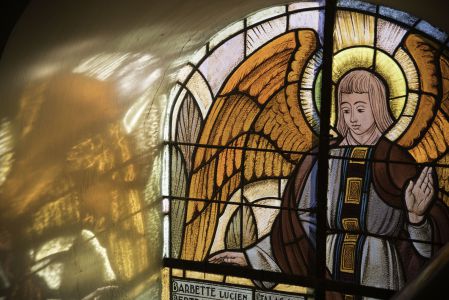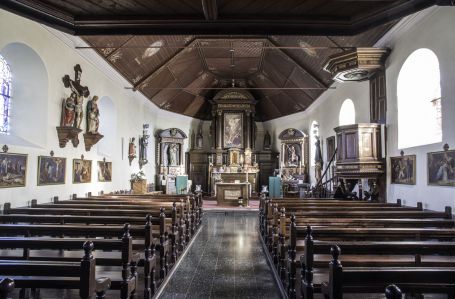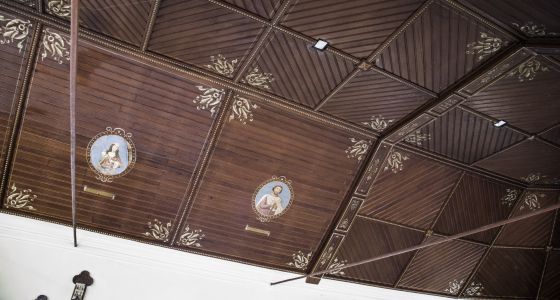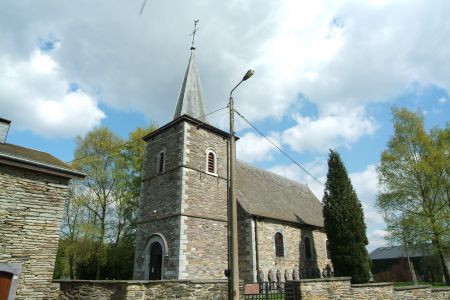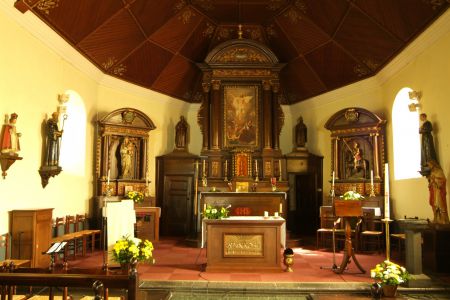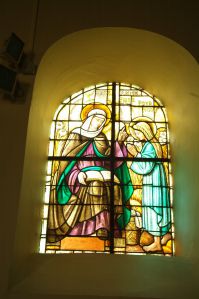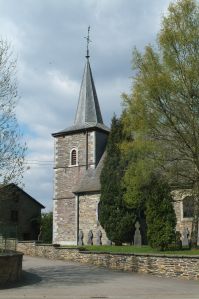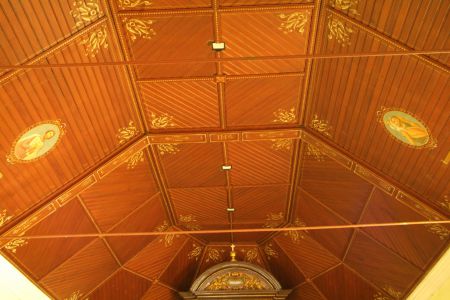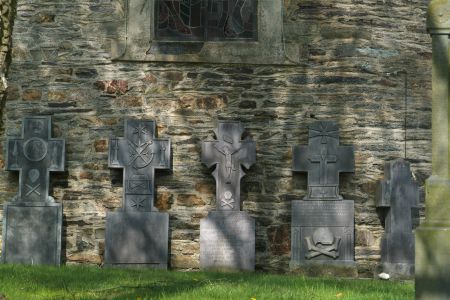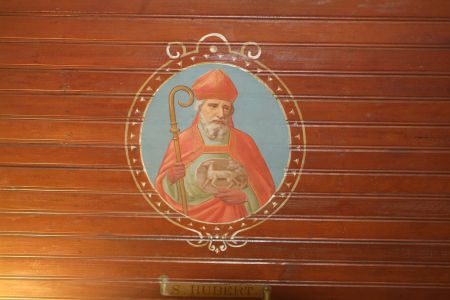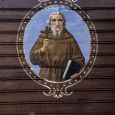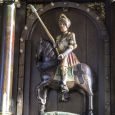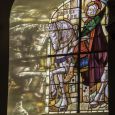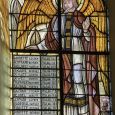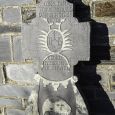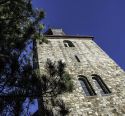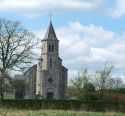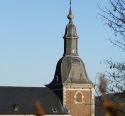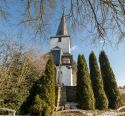Church | XIX | Neoromanesque | Catholic Church
Map
Opening hours
01 January - 31 December
Mon 9.00 - 18.00
Tue 9.00 - 18.00
Wed 9.00 - 18.00
Thu 9.00 - 18.00
Fri 9.00 - 18.00
Sat 9.00 - 18.00
Sun 9.00 - 18.00
Religious offices
Saturday 6.30 pm
Description
This small church is located in a beautiful hilly village which has retained its old houses and farms. The environment is rustic.
Along the building old tombstones rest. Around it, a lawn. In the interior, the painted wooden ceiling covered with the figures of saints is in the shape of the hull of a boat turned upside down and draws the attention. The colourful stained glass windows date from after the war of 1940. One of them contains the names of 18 prisoners of war who originated from the village and who all came back alive from the prison camps in Germany.
Photos
Remarkable elements
Painted ceiling
The stunning wooden ceiling in the shape of an inverted boat hull is adorned with painted portraits and stencil patterns, giving the church a charming naive and mountainous touch.
Statue of Saint Mauritius
Saint Mauritius is a Roman officer, originally from Thebes in Egypt. He led a legion that was ordered to exterminate Christians in the Valais. As a Coptic, he categorically refused to attack Christian brothers. Furious, the emperor eventually had the 6,500 men of the legion beheaded for rebellion. He displays the palm of martyrdom and carries the sword and standard of the Roman army.
Stained glass window of Saint Mauritius
Just next to his statue, Saint Mauritius is also represented on a stained glass window on the southern side of the nave, still as a Roman officer. At certain times of the day, when the sun is low, the reflection on the window opening sparkles with a thousand warm colours.
Commemorative stained glass window
This moving stained glass window bears the names of the 18 local prisoners of war sent to the Nazi 'stalags' during the Second World War. When the names are examined, four families are cut off from several of their male members, with all the anguish and extra work on the farms. The village was fortunate enough to see all its prisoners return safely in 1945.
Old cemetery crosses
The former Arbrefontaine cemetery has become a museum cemetery, remarkable for its many shale crosses. These spread throughout the Ardennes between 1740 and 1890, at the initiative of artisan carriers from Recht and Ottré, two neighbouring towns of Lierneux. Each workshop has its own preferred patterns and layouts, real trademarks: lunar skull for one; motorcycle helmet for the other; articulated and crossed shins for the other; overlapping bones for the other... These decorations are the ultimate symbol of death, intended to remind the living of what awaits him.
Nearby
Circuit
The spirit of the surroundings around Lierneux
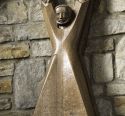
This itinerary for bike, motorcycle or car, gives pride of place to the region. It takes you through a gentle and rounded countryside. The paths invite you to wander around. But the landscape of meadows and forests that you will discover has not always been there!


